Between Two Oceans
Transiting the Panama Canal

How many people get to experience transiting the Panama canal in their own private boat? I don’t know the answer to that question but my guess is it’s a small percentage of the world population. It was one of the most memorable parts of our voyage since we left San Francisco not because it was nerve wracking, which it was at first, but because it literally transported us from one major ocean to another, through an ingenious system of locks and water propulsion that enabled us to cross the isthmus of Panama within 24 hours.
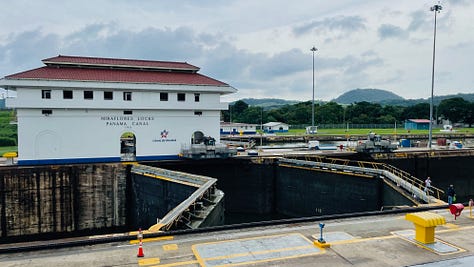

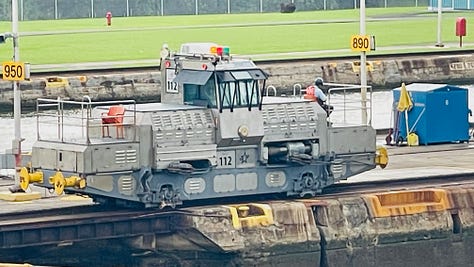
People visiting Panama City can see the canal at the Miraflores Visitor Center. We went there to check it out for ourselves and it was interesting to see how it looks gazing down from above. What a great chance to learn more of what to expect! We were hoping to see a ship passing through the canal while we were there, but our timing was unfortunately off.
We didn’t have long to wait though, before our time to cross the canal arrived. We had spent a long time waiting, with several delays, and we were more than ready. Every small boat crossing the canal is assigned an advisor, and unfortunately, the number of available advisors was fairly limited at the time we crossed. When our time came, after confirming with Flamenco control, we headed out to await the arrival of our advisor near a specified channel buoy.
When he arrived, we learned that he would be the one directing all three boats in our flotilla, and our boat would be the one that would be doing most of the line handling work. We would be positioned at the wall, with Jubel in the center, and Queso Grande (a catamaran) on the other side. Since we were against the wall, our line handlers had to continually adjust the length of the lines holding us to the wall as the water level rose.
On entry into the first lock, we had to catch the lines that were thrown down from the men at the top of the walls, and then securely attach them to our cleats. As the boat rose, we had to both keep the boat close to the wall, preventing the swirling currents from pushing our raft of three boats around, as well as keeping us off the wall, so we didn’t damage the boat. We were nervous about potential damage, probably because we hadn’t transited the canal before! Luckily, different combinations of power from all three boats helped to control the raft as well.
To cross, each boat must have four, one-inch thick, one-hundred-foot long mooring lines, eight large fenders (some people use old tires, but they leave black marks), as well as suitable cleats to attach and work the lines. To provide these necessaries, and to ease the concomitant flood of paperwork, we hired an agent. As our time approached, Roger coordinated with the canal authority to schedule our passage, and connected us to a local gentleman named Tito who would serve as one of our four line handlers. We also invited along our friends Sam and Keegan from San Francisco, and our friend Mike from SV Via whom we met with his wife, Taylor, in the Sea of Cortez way back when.

Tito is from Colon. He came aboard as a line handler for our canal crossing. He is a jolly soul, medium build, short cropped hair, with crow’s feet around his eyes that deepen with his ready smile. The day Tito arrived was the day following the murder of his son. Tito has many children: he adopts the young men of Colon and helps them find a way through life that doesn’t involve the gangs and killing rampant in Colon.
With a murder rate of 25.7 per 100,000, Colon doesn’t even make the top 50 most violent cities worldwide, and falls far short of, for instance, New Orleans, which has the highest murder rate in the US at 70.56 per 100,000, at least according to the latest statistics posted to Wikipedia1. The most common method used in Colon though is chilling: young men walk up to their victims on the sidewalk and simply shoot them in the face without warning, just to loot the body. This is exactly what happened to Tito’s son the night before. It was the fifth time this happened to one of his kids. At this time of our crossing, Tito had fourteen children he was mentoring.
Tito has been working on the canal for many years, and as a line handler for the last fifteen. Tito’s grandfatherly presence was respected by all the canal personnel on our boat, as well as those around us on others. Tito was in his late fifties or early sixties, while the canal advisors tended to be younger, sometimes much younger, from mid-twenties into early forties.
The video is when we initially tied up to the wall after they threw us the lines and the advisor was yelling to Mike and Keegan to either tighten or slacken the lines more or less. This was all in preparation for the water that would begin flowing in from Gatun Lake to take us up the wall and up the land to the next set of locks. The ropes had to be at the right tension to withstand the force of the water turbulence that was created as it lifted us.

The Panama Canal has six locks that lift and lower ships between the Pacific and Atlantic Oceans. Each lock provides an increase or decrease in elevation, depending on which direction you’re going. The two Miraflores Locks are located on the Pacific side, connecting via a short lake to the Pedro Lock, which provides the third step up to the Culebra Cut, the most difficult part of the canal to construct. The Culebra Cut is a deep channel cut through the spine of the mountain, into Gatun Lake, from where the Gatun Locks descend to the Atlantic through three locks.
Each lock is actually two locks side by side, like lanes on a highway. This allows ships to pass in opposite directions at the same time, but in practice, ships move in one direction at a time for safety reasons.2
As we were transiting the canal, occasionally (and more often than you might think), some question would arise between the advisors on each of the boats of our little raft, and they would need to confer to sort out some disagreement in how to approach the problem at hand.
These disagreements probably stemmed mainly from a power struggle between the various advisors on the different boats. Each boat would have a single advisor, but between them they would need to select an Uber-advisor, one advisor to rule them all.
In these instances, Tito would often quietly pull one of the others aside, and privately make a few comments, without any fanfare, and without taking any credit. After one of these conversations, we would often find that suddenly the way forward would be clear to all.
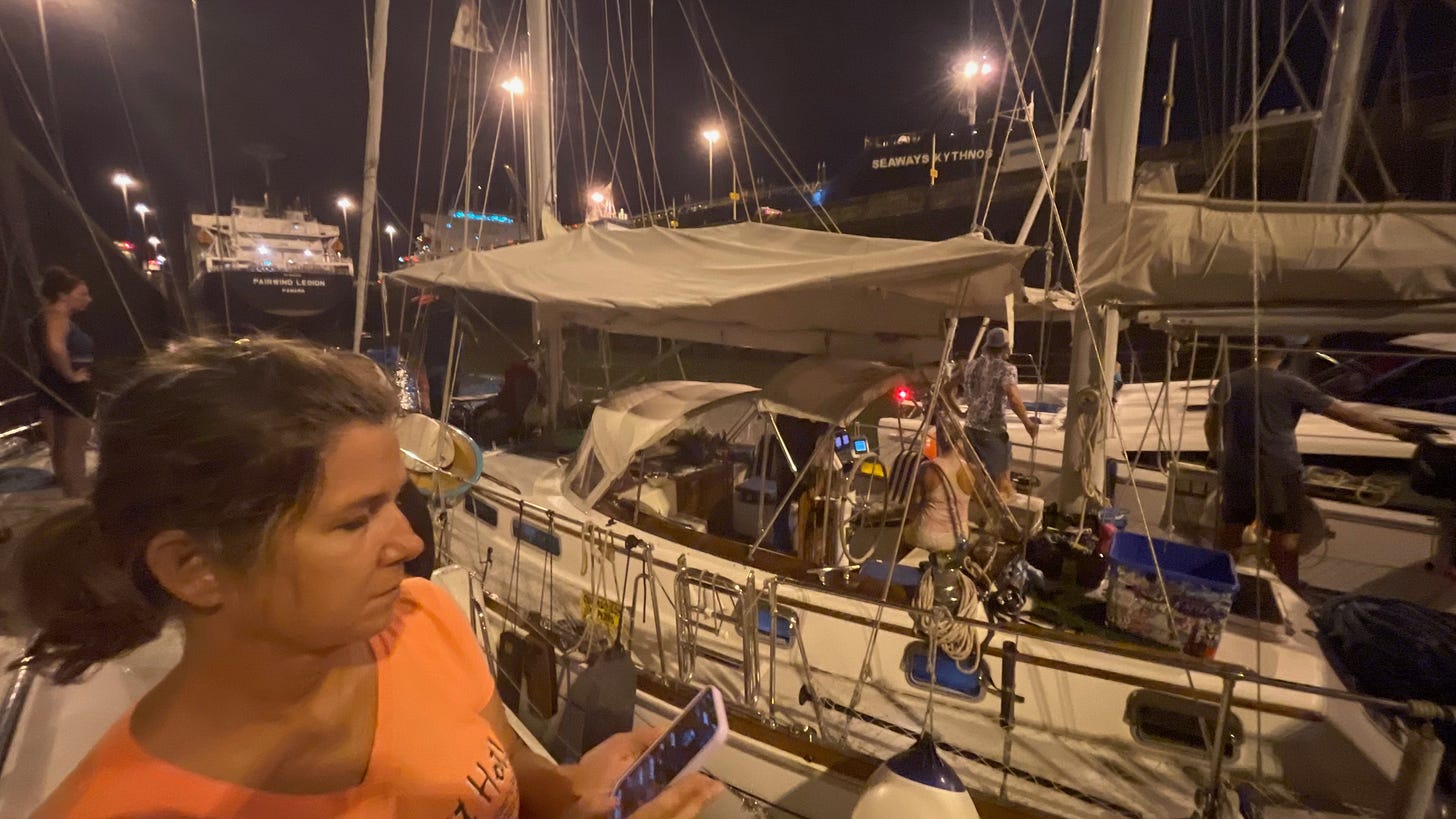
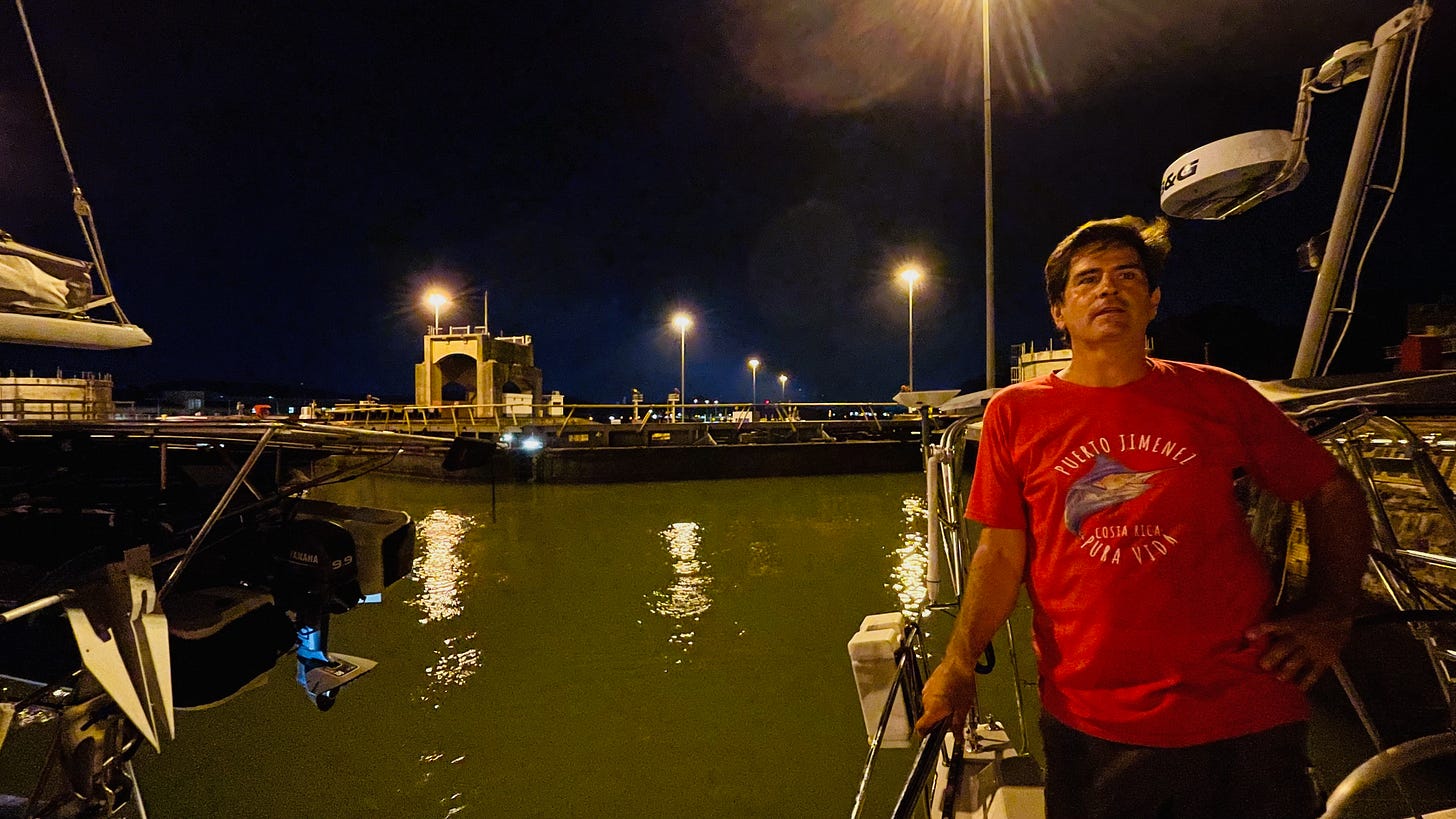
The doors closed and the waters began lifting us up. We learned on our visit to the Miraflores Center that the locks are unique to the Panama Canal and are considered a structural triumph. It was really awesome to see and feel the power of the twenty six million gallons of water pouring in from Lake Gatun to lift us up to the level of the land. Of course, since that’s a lot of water to lift a few little sailboats, the sailboats are always tucked into the locks with a massive ship.
We saw an armadillo grazing on the grass next to the first set of locks. What a strange sight and it reminded us that there was still life happening outside in the natural world and beyond this all consuming, man-made event!
This video shows the turbulence of the water as it rises us up the wall! The lock chambers are 110 by 1,000 feet and can fill with water in eight minutes.
It was a sad and surreal moment, as the first set of locks closed behind us, shutting us off from the Pacific Ocean with a rush of memories of our time on the Pacific, and especially our time living in San Francisco for 25 years with friends, old and new.
We headed out away from the first set of locks after separating from our buddy boats and started motoring inside Gatun Lake. It was going to be a long trip and Peter told me it was time to make everyone dinner. Peter and I bought all the ingredients for a chicken curry noodle dish. What a project it ended up being while moving pretty fast across the water after a long day! We fed everyone on the boat which included three large male professionals plus five crew members.
We had a lot of chicken to cook which was very cold. Sam and I started cutting it up and cooking it separately from the vegetables which we chopped up. After we cooked everything we still needed to make the curry sauce and cook the noodles!
Sam was so much fun to work with since she was really good at figuring out the right spice ratio under pressure and kept me grounded from feeling too overwhelmed with her sense of humor. Everyone was hungry and could smell what we were cooking which was taking a while. We wanted to make something hot and yummy since it was a long day and it would show our appreciation for all the help. I think it was 9 pm when we got to finally put that dinner into our stomachs!
To our surprise, when we got closer to Gatun locks, we learned that the advisors wanted to get off the boat. It was too late to do the second round. So the five of us plus Tito went straight to sleep. The next morning I got up early to make coffee for everyone while putting a whole pound of bacon in the oven.
I think we waited until the middle of the afternoon before the next set of advisors came. We had no idea when they would arrive until the workboat approached to drop them off. which I guess is typical. It was raining off and on while everyone was chatting up a storm. I was pretty tired as I’m sure Peter was too. I went into the V-berth to find some quiet time for myself. It was a lot of work leading up to the transit and now being in a small space with many people, I needed a little time to decompress.
Leaving the Pacific was another major transition for us. It was also Rosh Hashanah which is a Jewish holiday for ushering in the new year and it would soon be my 60th birthday, ushering in a new decade! I felt the waters of the canal moving within me. I didn’t really understand my feelings at the time but physical change, like moving to a new house in a new city, or moving across the country, can feel pretty overwhelming. People often ask me what it’s like living on a boat and sailing to different places. The answer is that the highs are higher and the lows are lower than on land, and there are more of them! It’s no coincidence that we are experiencing the ocean swell every day and some days the waves can be pretty big.
When we left on our journey we envisioned sailing to far away destinations, but we didn’t really know what it would be like until we actually started on our way.
There are so many physical influences to our experiences in reality, for example, crossing over the isthmus of Panama. We were doing something on a boat that could not be done on its own accord. It took the genius of man to engineer the passage for us. Before the 19th century, boats had to sail 13,000 miles around the tip of South America to get to the Atlantic. Talk about change! Now ships only take about 8 hours to transit the canal, saving a lot of time, money and many lives, but it is still a huge undertaking.
Approaching Gatun Locks felt completely different from Miraflores Locks. It was much less intimidating and tiring, partly because we had more daylight and we knew what we were doing. The locks were also much more placid as we descended, since the water was flowing out from underneath us, rather than rushing in with swirling currents. I’m going to guess that it all made a difference and upon reflection it seems to me now that going uphill against gravity, while closing a major chapter in our lives, was harder than going downhill and opening a new chapter.
We were able to experience the moments as they each flowed in as the water flowed out. It all felt very smooth and easy.

A new beginning and so much to look forward to as we begin our next chapter of cruising life.
It was dark by the time we arrived to our slip in Shelter Bay Marina. We were excited to celebrate our big accomplishment and we were excited to see what the Atlantic and Caribbean had in store for us in the months ahead. Stay tuned as we take you on a trip to the mountains and rain forests of Panama before we sail off to the San Blas Islands.
List of cities by homicide rate shows the statistic found in the text of the article above. however List of United States cities by crime rate shows different data, with St. Louis, Missouri topping the list, although with a lower figure of 66.07 per thousand. The latter link quotes an FBI website indicating that “the FBI web site recommends against using its data for ranking because these rankings lead to simplistic and/or incomplete analyses that often create misleading perceptions adversely affecting cities and counties, along with their residents.”
Thanks for reading our posts! We always love hearing from you so please feel free to reply to this email and let us know what you are up to!



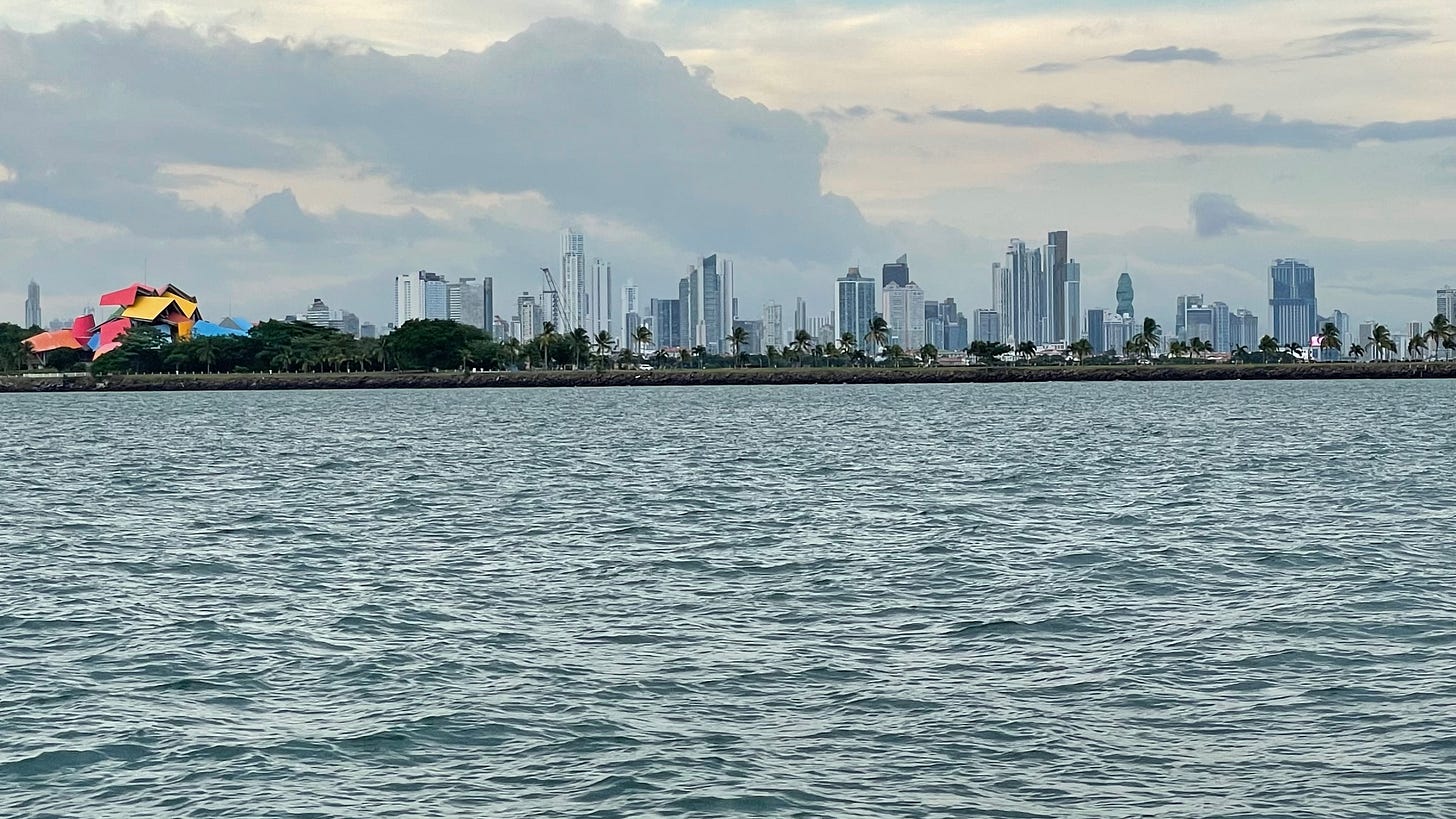


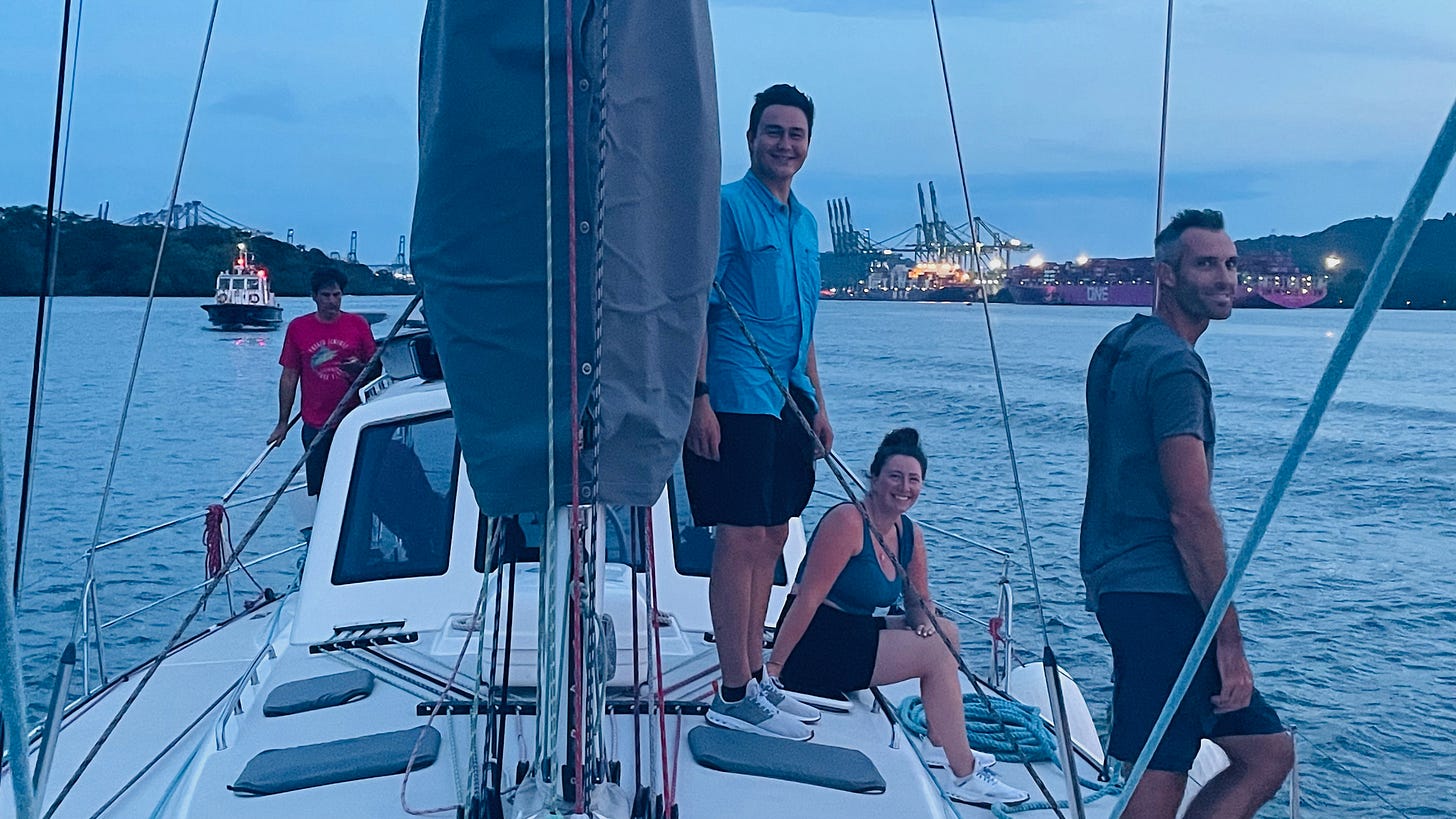


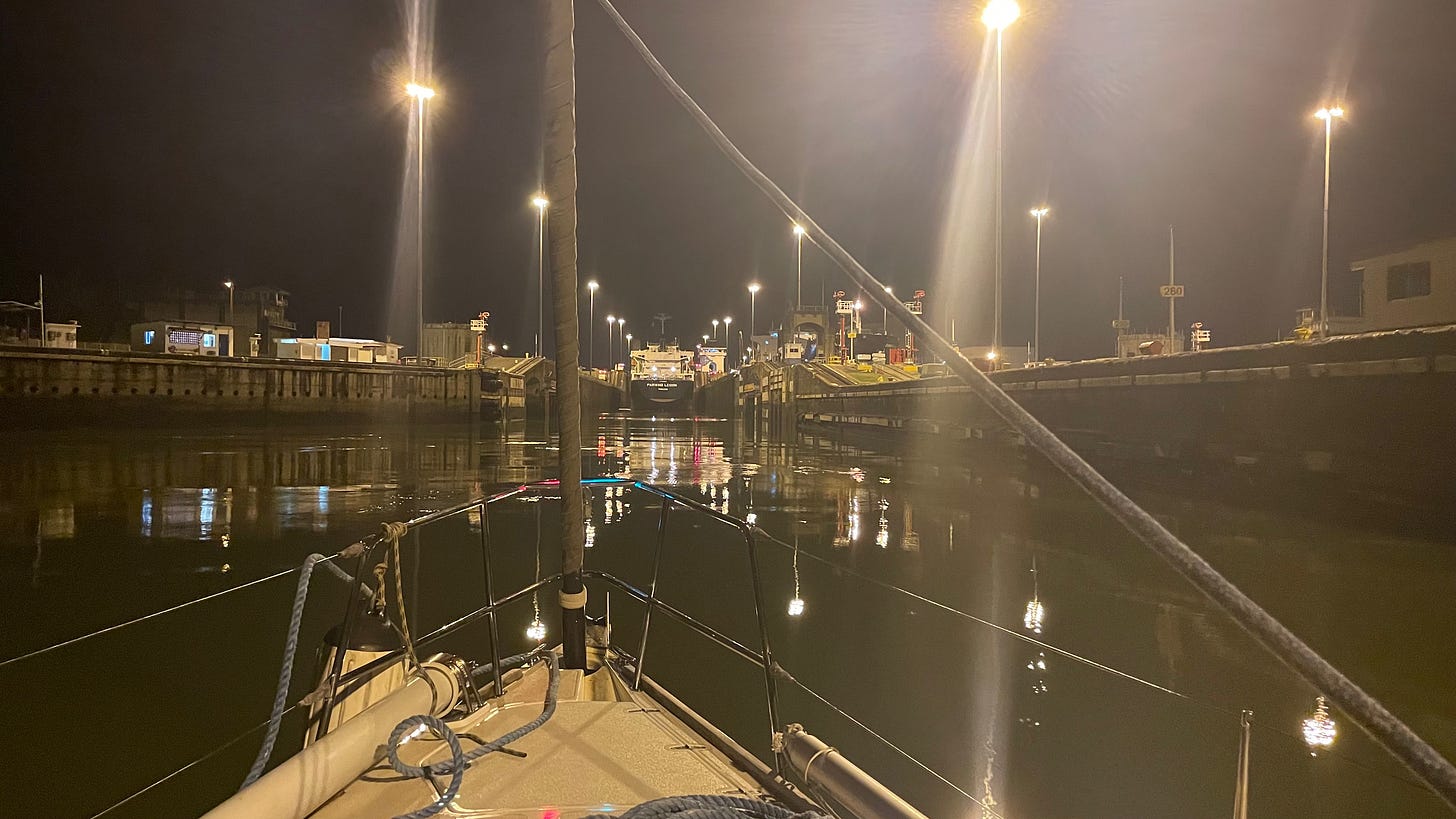
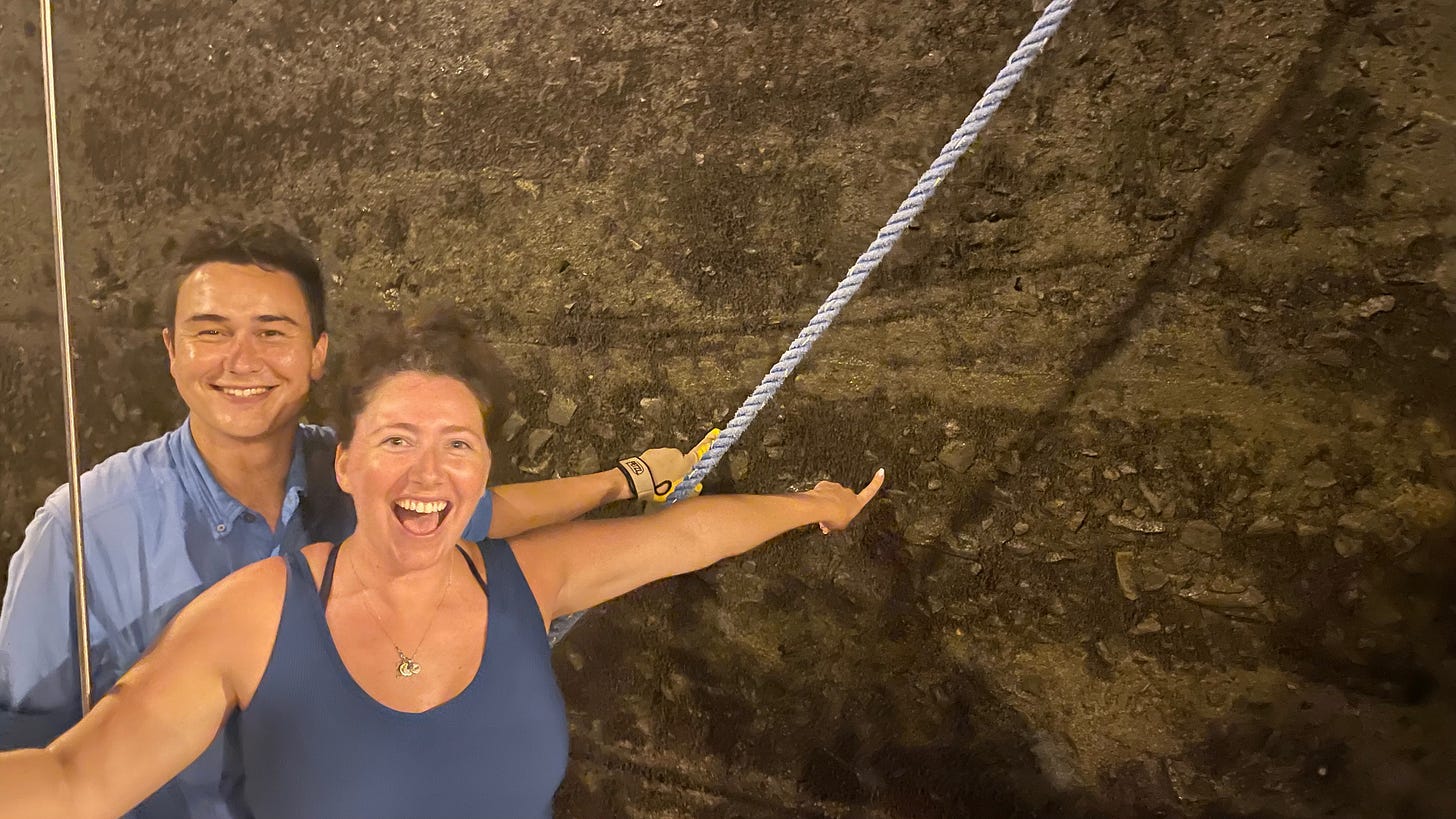




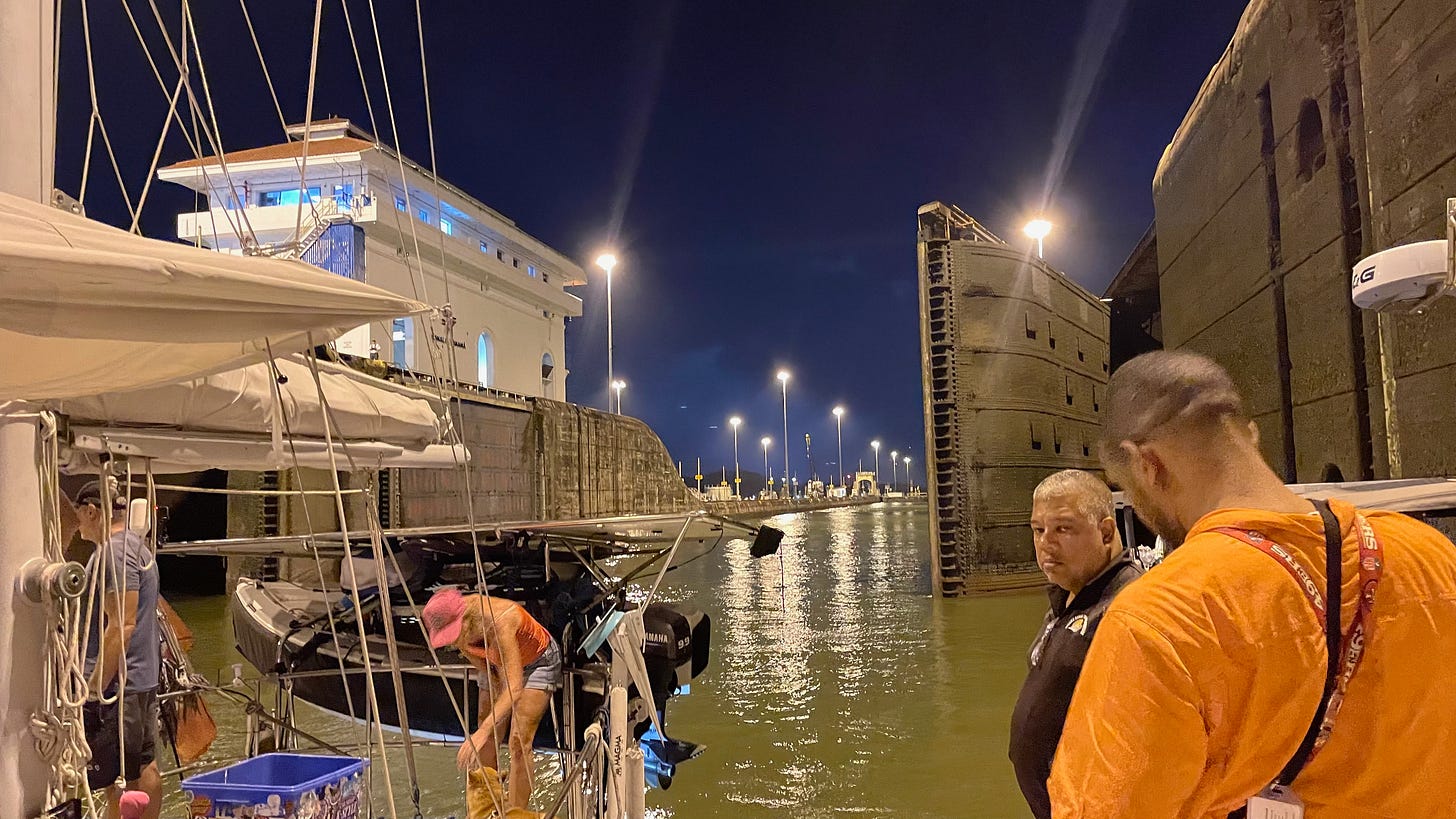

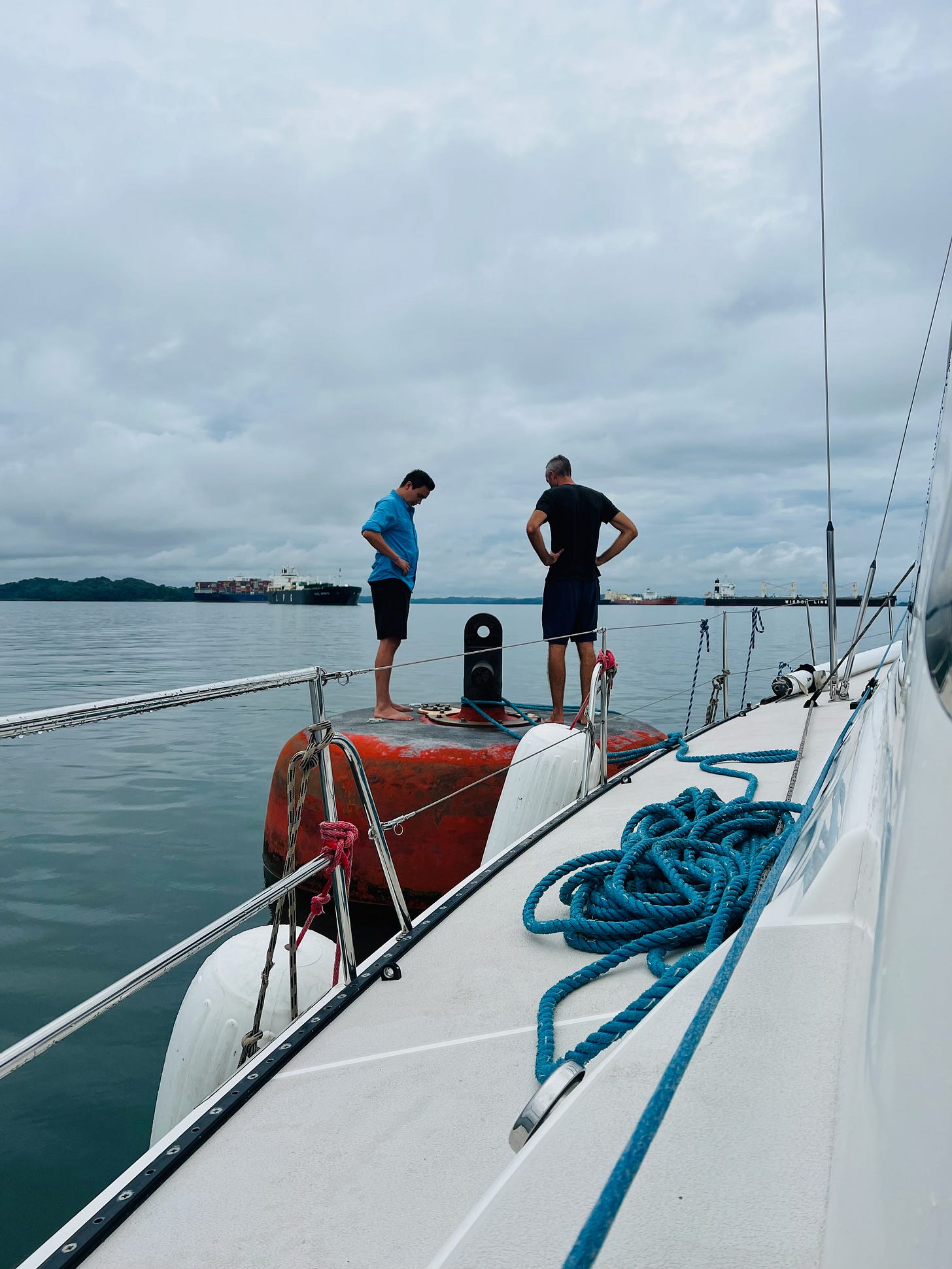

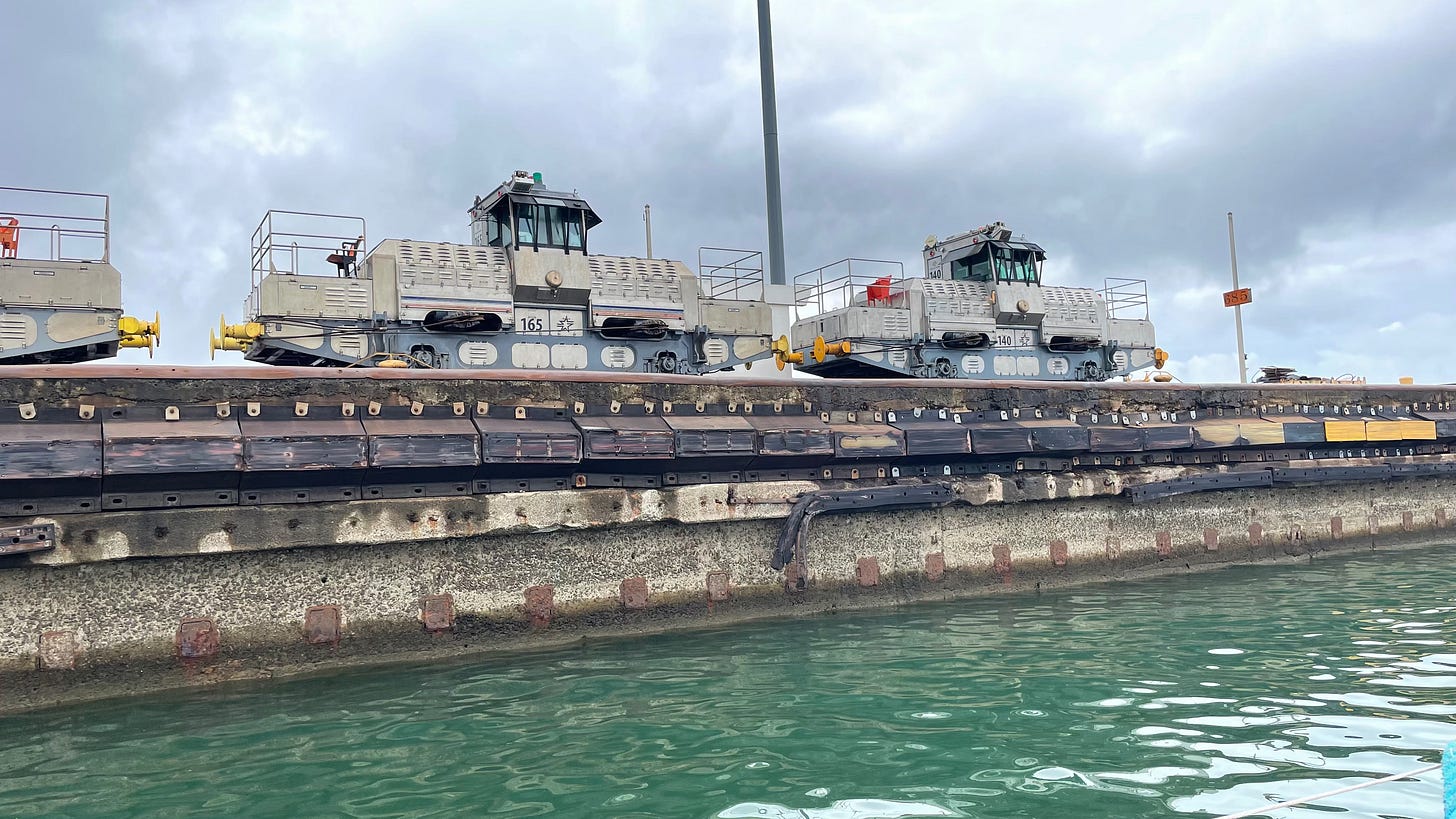


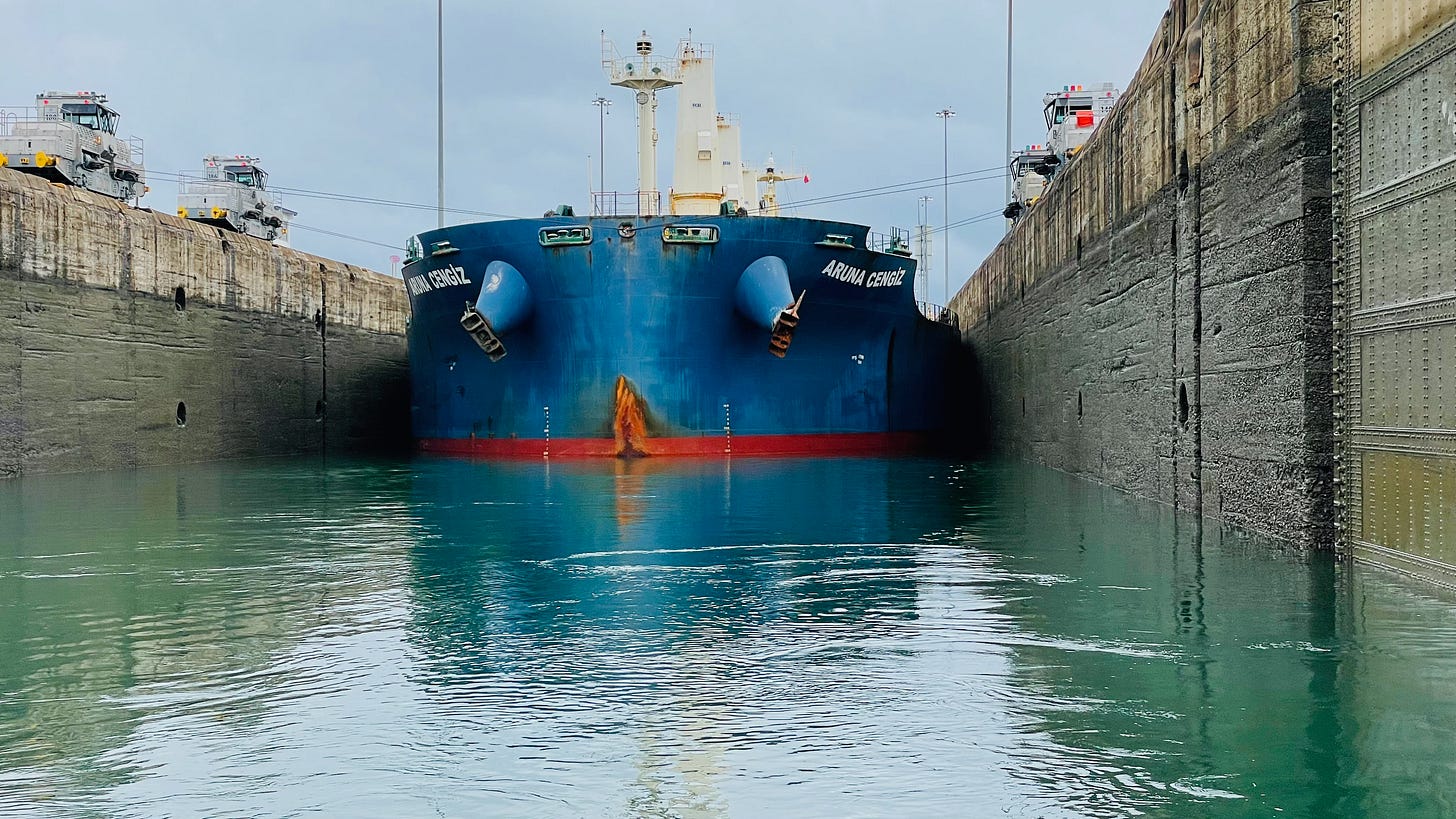


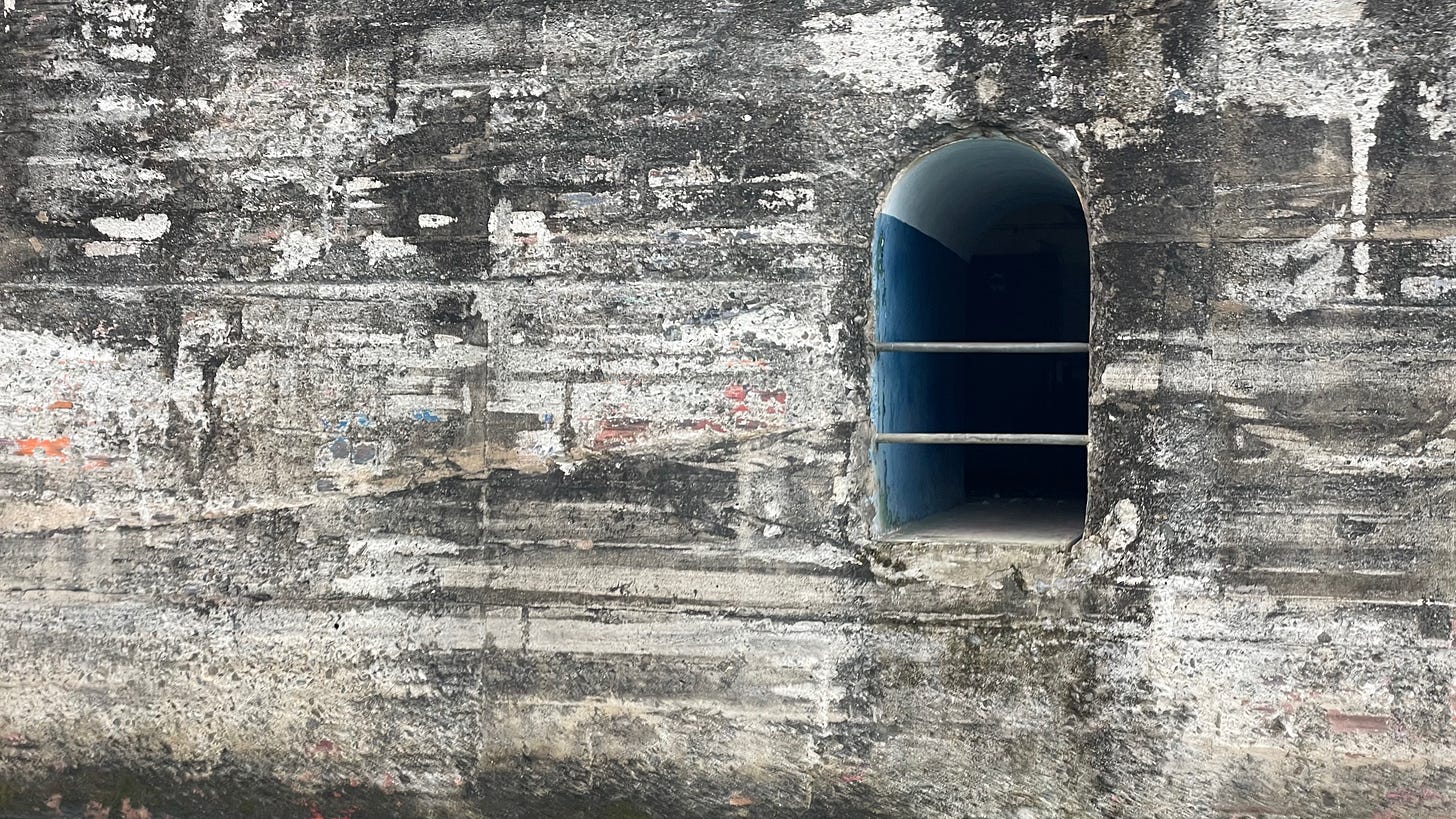
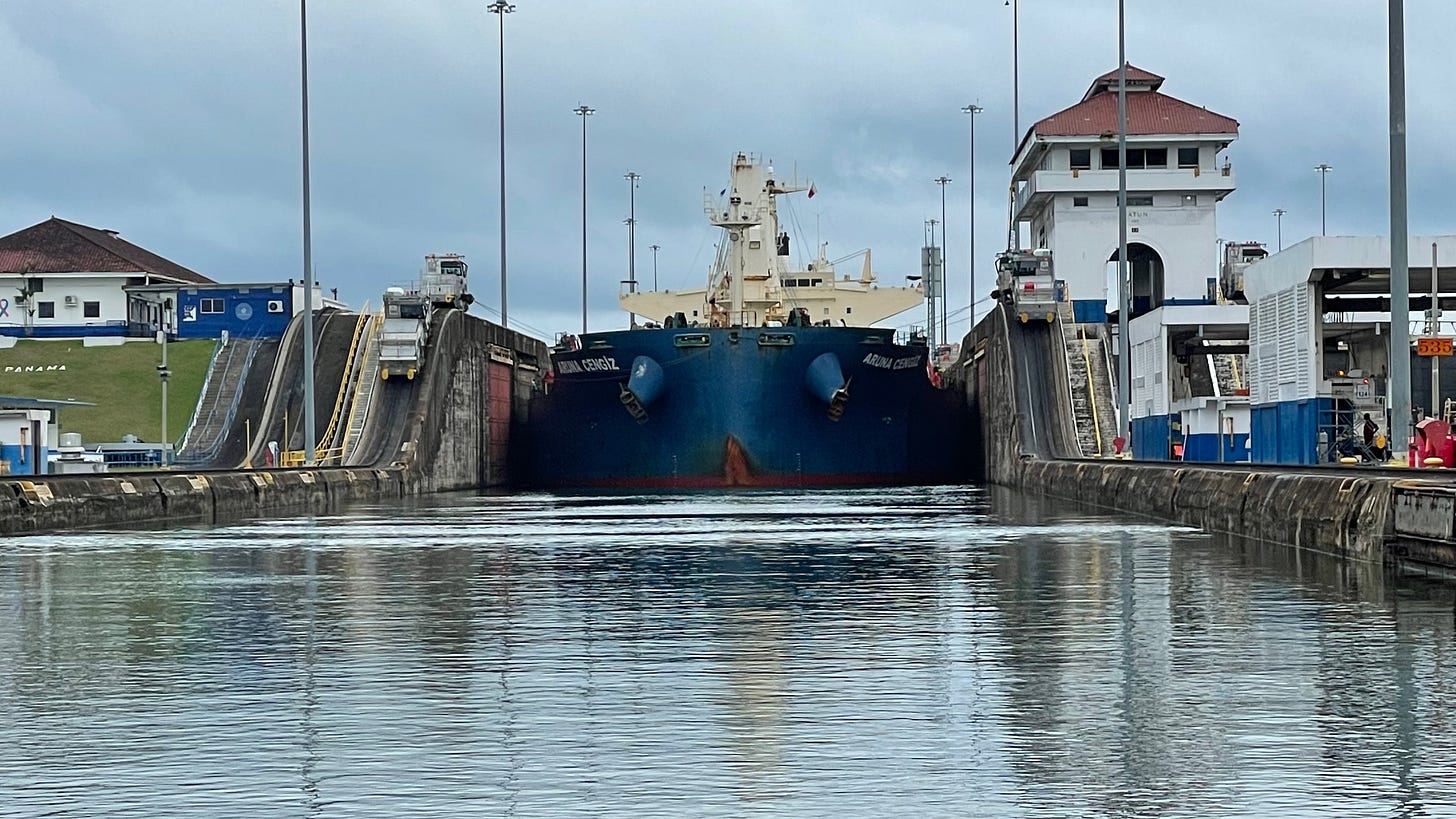

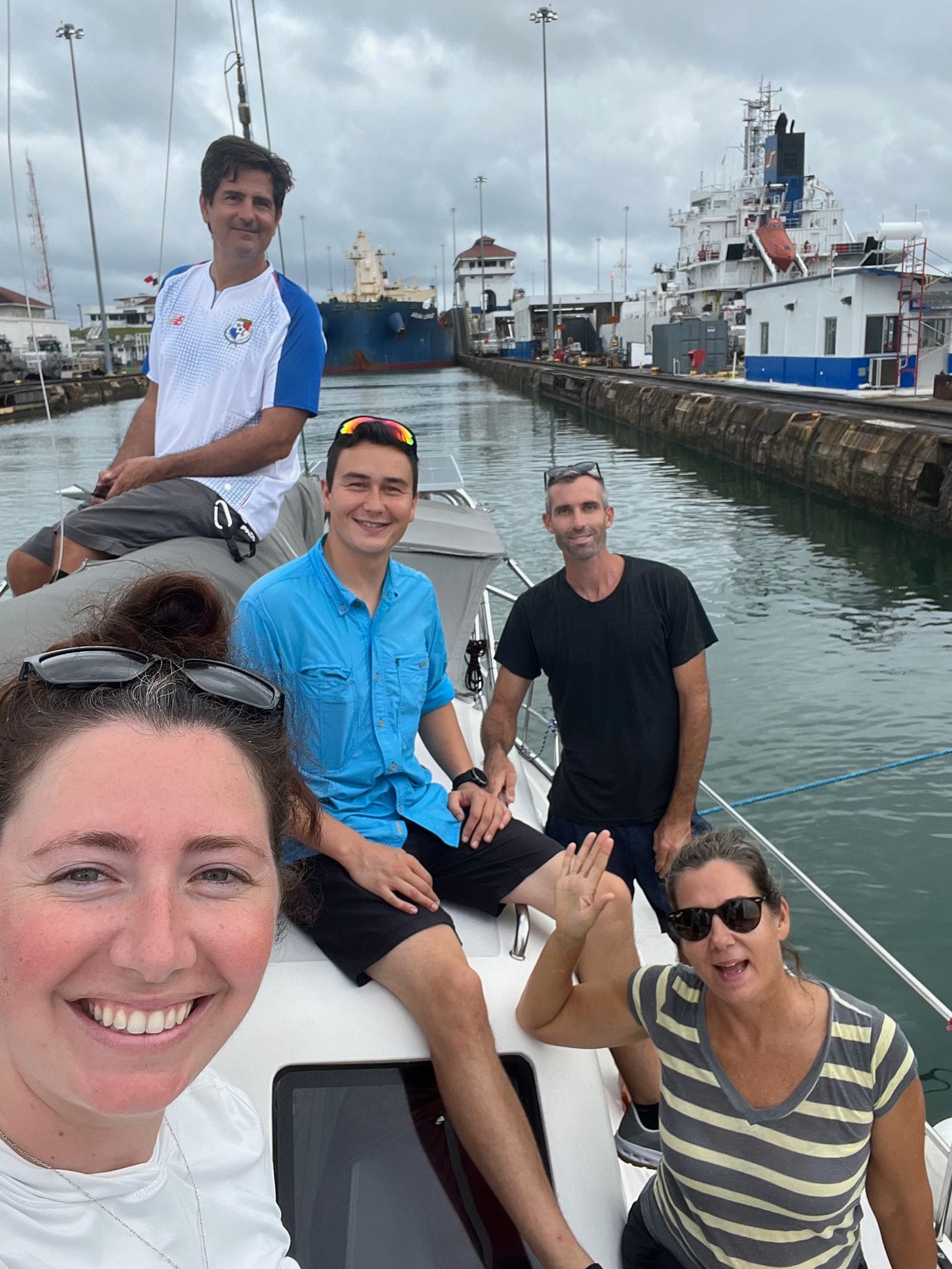
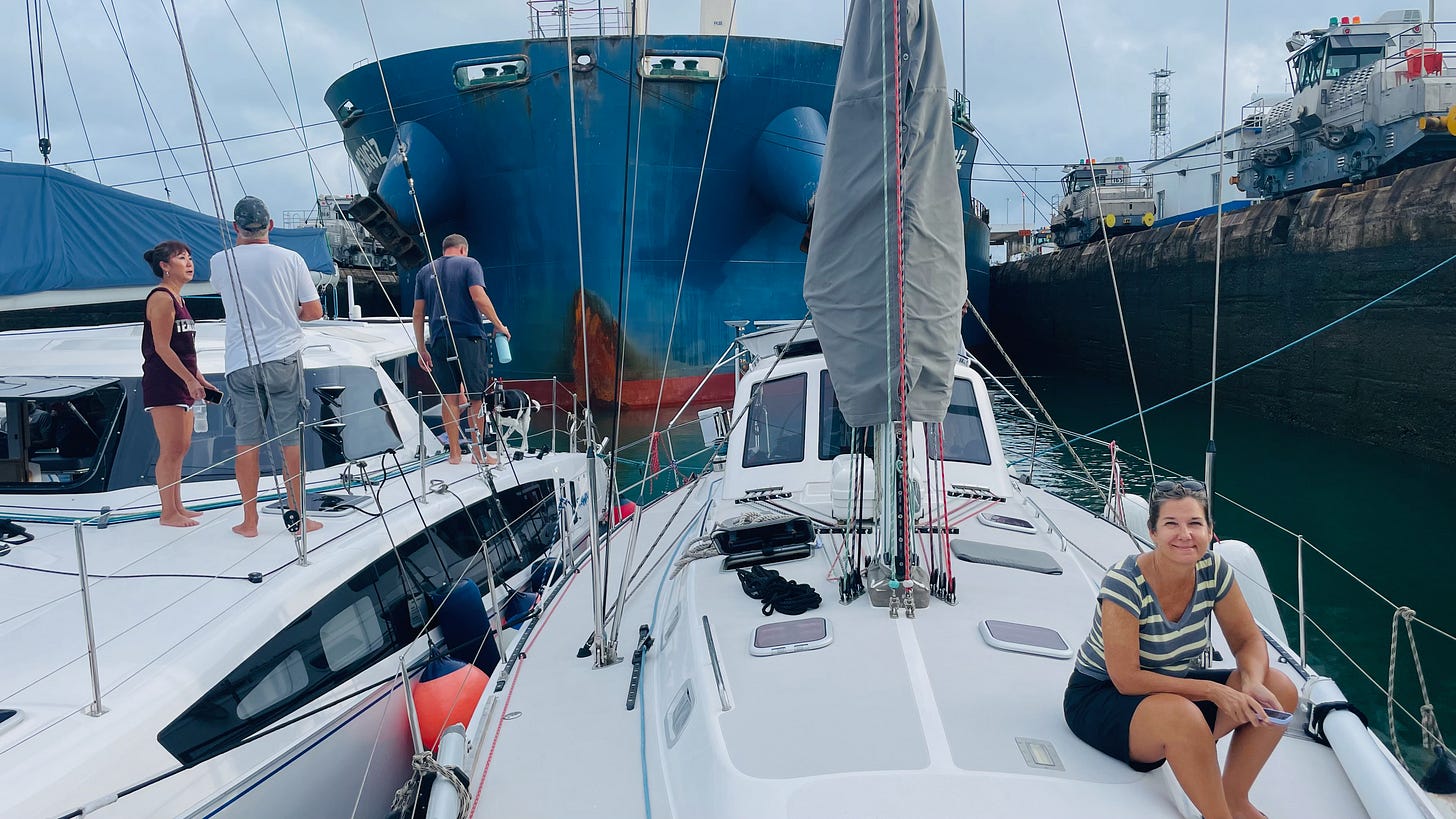


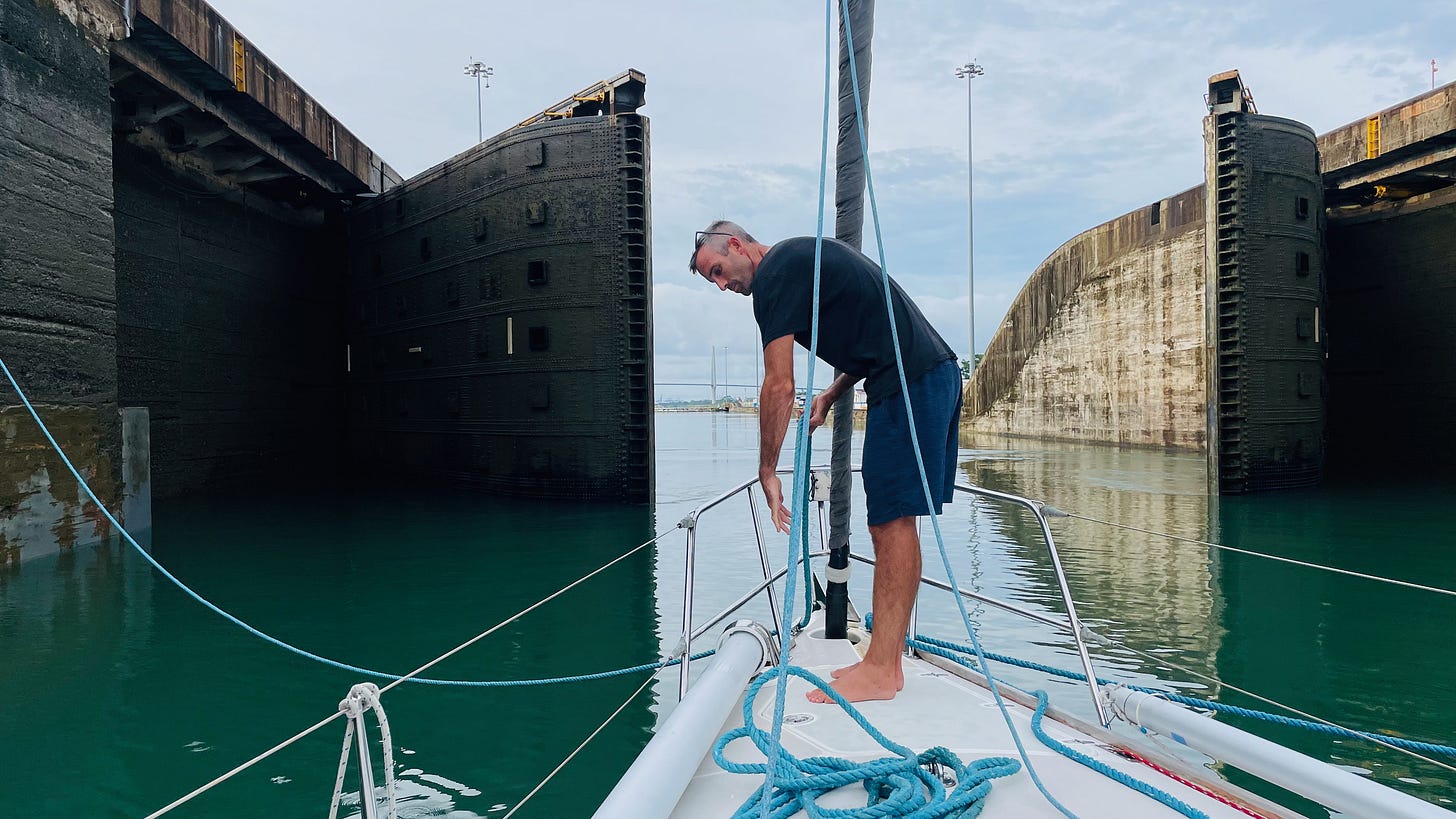


I really enjoyed this one! What a cool experience!